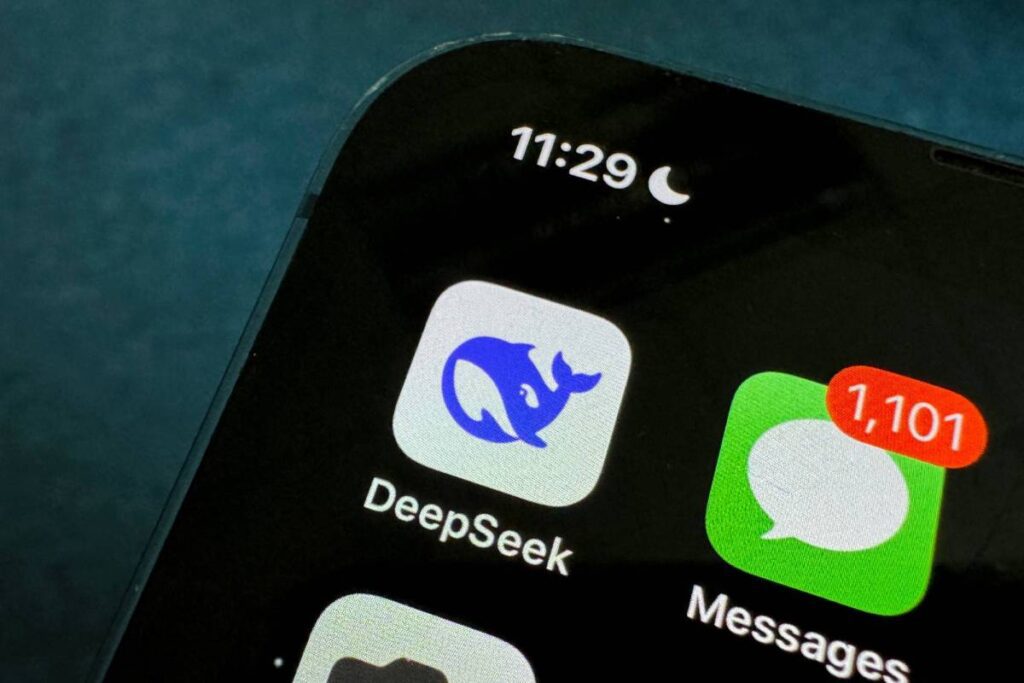The Rise of DeepSeek: An Analysis of Its Impact on the AI Industry
DeepSeek, an artificial intelligence lab based in China, has recently gained significant attention after its chatbot application soared to the top of both the Apple App Store and Google Play charts. This rapid rise has prompted discussions among Wall Street analysts and technology experts concerning the sustainability of the U.S.’s lead in the artificial intelligence sector, particularly in relation to the demand for AI chips.
Origins of DeepSeek
Founded in 2023, DeepSeek operates as a spinoff from High-Flyer Capital Management, a Chinese quantitative hedge fund established by Liang Wenfeng in 2015. Wenfeng, who initiated his trading career during his academic studies at Zhejiang University, directed High-Flyer to develop AI algorithms to enhance trading decisions. The establishment of DeepSeek was aimed at creating AI tools that would function independently from the financial services of High-Flyer.
From its inception, DeepSeek developed its own data center clusters for model training. However, similar to other Chinese AI firms, it has faced challenges due to U.S. export restrictions on advanced hardware. For training its latest AI models, DeepSeek resorted to the use of Nvidia’s H800 chips, which are less powerful than the H100 series available to American companies.
DeepSeek’s AI Models: Significant Advancements
The debut of DeepSeek’s models—including DeepSeek Coder, DeepSeek LLM, and DeepSeek Chat—in November 2023 laid a foundation, but it was the subsequent release of the DeepSeek-V2 family in spring 2024 that captured the industry’s interest.
DeepSeek-V2 showcases impressive capabilities in analyzing text and images, achieving considerable performance in various benchmarks while also being cost-effective compared to rival models. Consequently, domestic competitors such as ByteDance and Alibaba were compelled to adjust their pricing strategies for their AI offerings.
Following the V2 release, DeepSeek-V3 followed in December 2024, further solidifying the company’s reputation. Preliminary internal testing indicated that DeepSeek V3 outperforms both readily available models, like Meta’s Llama, and API-restricted models, such as OpenAI’s GPT-4.
Notable too is DeepSeek’s R1 model, categorized as a “reasoning” model, launched in January 2025. DeepSeek claims that R1 demonstrates comparable performance to OpenAI’s competing products on crucial benchmarks. This model ensures self-verification, thereby enhancing its reliability in technical domains like physics and mathematics, though it does require longer processing times.
However, R1 and other DeepSeek models face limitations imposed by Chinese regulatory bodies that mandate adherence to “core socialist values.” This regulation restricts the models from addressing sensitive topics, such as the Tiananmen Square incident or Taiwan’s political status.
Disruption and Controversy
Despite its striking success, the business framework of DeepSeek remains ambiguous, as it offers many of its services below market value or entirely at no cost. Interestingly, the company has opted against seeking external investment funding, despite the high interest from venture capital firms.
DeepSeek asserts that breakthroughs in efficiency have played a crucial role in its cost advantage, although some experts have raised questions regarding the veracity of its claims. Nevertheless, developers have shown enthusiasm for DeepSeek’s models, leading to the creation of over 500 derivative models based on R1, contributing to more than 2.5 million combined downloads on platforms like Hugging Face.
The emergence of DeepSeek has been seen as both revolutionary and contentious within the AI community. Its rapid rise has notably impacted major tech firms, leading to an 18% drop in Nvidia’s stock and spurring OpenAI to publicly label DeepSeek’s operations as “state-subsidized.” In response to concerns around security and influence, the U.S. government has initiated discussions about prohibiting DeepSeek’s use on government devices, echoed by similar actions from other nations and organizations, including South Korea and New York state.
The Future of DeepSeek
Looking ahead, DeepSeek’s trajectory appears positive regarding model enhancement and technological innovation. However, the growing scrutiny from the U.S. government may challenge its expansion and international market engagement.
This examination of DeepSeek highlights both its potential and the regulatory complexities involved as the landscape of AI continues to evolve. The story of DeepSeek is still unfolding, and its impact on the global AI race remains to be fully realized.
This article was originally published on January 28, 2025, and will receive ongoing updates as new information emerges.


